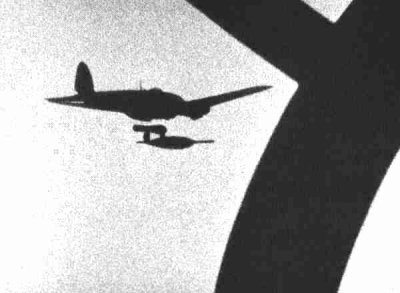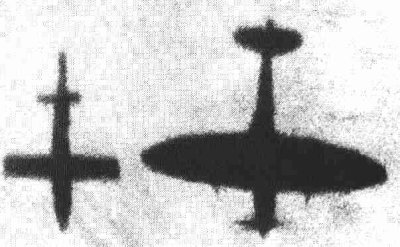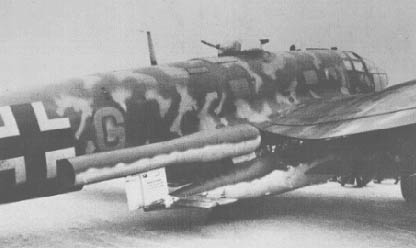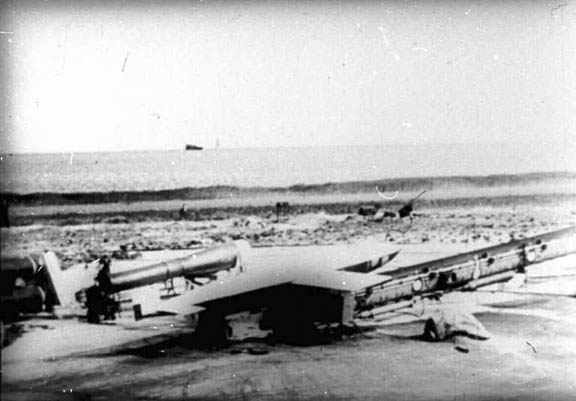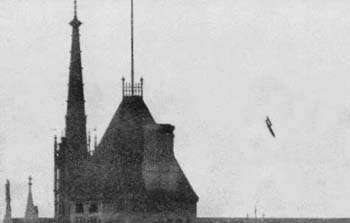Vergeltungswaffe 1

|
The FZG-76 was more commonly known as the V-1 (Vergeltungswaffe 1,
Vengeance Weapon 1) missile. It was a pilotless, mid-wing monoplane
powered by a unique pulsating flow duct motor, carrying a warhead
weighing 850kg. Research and development of the missile were initiated
in June 1942 by the Luftwaffe, which viewed the cruise missile as a
pilot-less plane, at the research station in Peenem�nde. The project
was carefully planned so the product could be easily and cheaply
mass-produced. Almost no strategic material was needed; mild steel and
wood made up the fuselage, and weight-saving was of little concern.
The missile weighed 2,208kg, and could carry 567.8 liters of fuel.
Guidance and accuracy were pre-programmed into the missile before
firing and this protected the missile from any form of electronic
interference or jamming. The path of the missile would always be a
straight line. When target was reached the pulse jet simply shut off
and the missile began its free-fall. Launching took place on a fixed, sloped ramp about 45.7m in length, utilizing a piston mechanism (like the steam catapults on carriers) to haul the missile into air at a speed large enough to keep the missile flying. Conventional bombers like He 111 could also fire the V-1 from air, flying in a straight line toward the target to aim the missile. There had also been plans to launch the V-1 from a U-boat. Ground launch velocity was about 320km/h; the speed increased to an average of 560km/h when the pulse jet took over. The missile could reach an altitude between 1,066m to 1,219m, and this made it especially difficult for British anti-aircraft defence since it was too low for the heavy guns and too high for light ones to engage effectively. Only when the automatic power control was used could the British guns shoot down the V-1 successfully. The maximum range was about 208km, and at this range about 80% of the projectiles would land within an eight-mile circle of the intended target; not too bad for the contemporary technology (sometimes even better than night-bombing). Mass-production began in March 1944 and approximately 35,000 were constructed before the end of the war. Of the 35,000, 9,251 were used against England (London in particular), of which 4,621 were shot down, and 6,551 landed on Antwerp, of which 2,455 were destroyed. |


